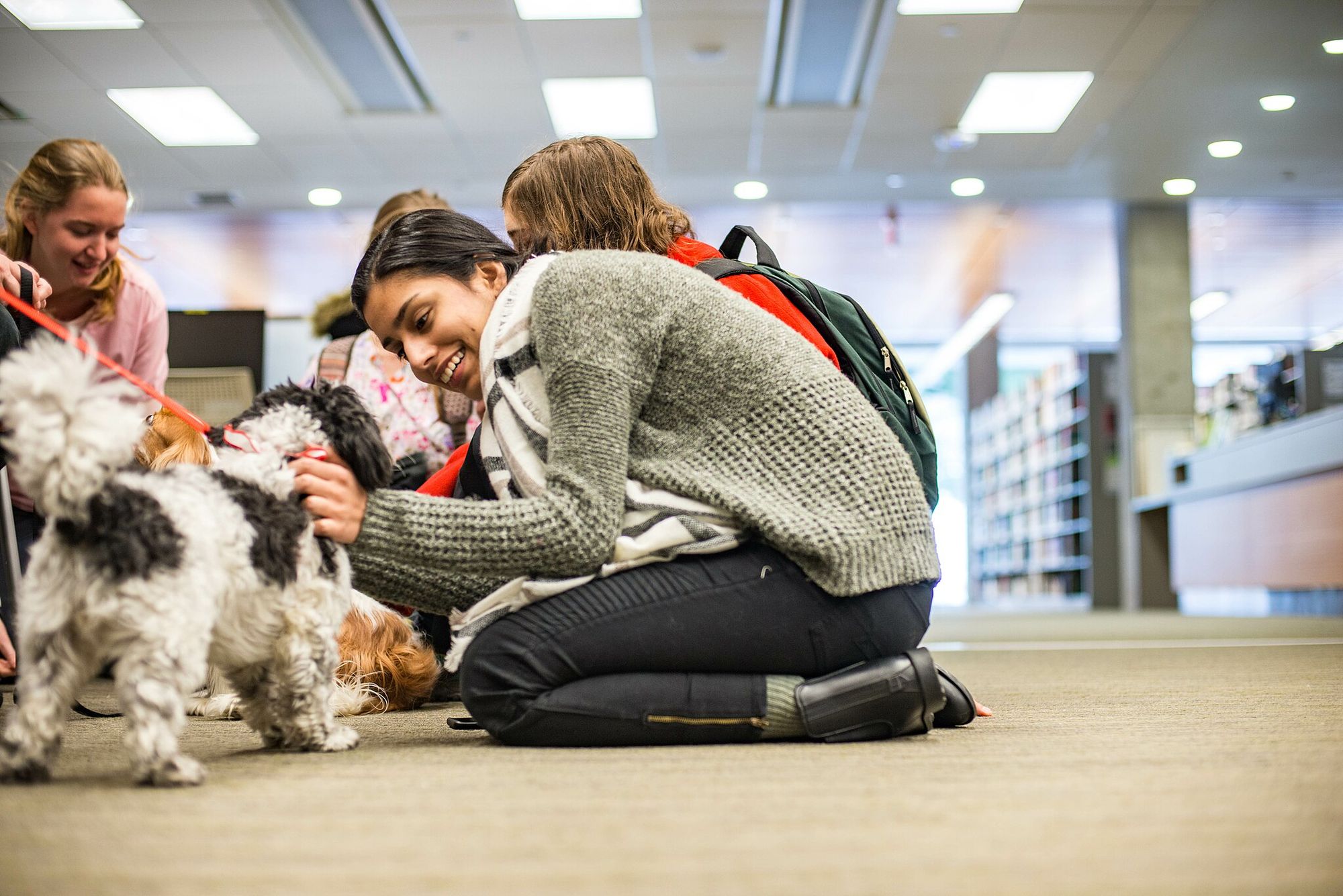by Mariana Burgos
Studying at a university can be a highly difficult period for students, especially when they are presented with new surroundings as well as the social, academic, and emotional obstacles that come with university life. The transition from late adolescence to emerging adulthood is a critical developmental stage characterized by new difficulties, shifting roles, and greater responsibilities.
For many students, coming to university is their first time away from home, and they may feel homesickness or difficulty adjusting away from friends and family. First year students, in particular, are more prone to experiencing challenges in adjusting to and learning to manage their new duties. These additional obstacles may be even more challenging for those who are suffering from psychological disorders such as anxiety and sadness. University students were shown to have greater rates of psychological discomfort than the general population. Finding measures to promote student health and well-being in universities is thus critical. Interacting with animals is one method that may be beneficial.

It is often stated in the media that keeping a pet may have a favorable influence on our physical health and well-being, such as greater physical activity, increased social contacts, and lower blood pressure.
Pet ownership has also been shown in studies to offer certain psychological advantages. Several studies have found that pet owners, particularly dog owners, had higher levels of life satisfaction, higher self-esteem, lower levels of loneliness and anxiety, higher levels of ambition, and higher levels of good moods.
In the article “Therapy Dogs in Educational Settings: Guidelines and Recommendations for Implementation,” Christine Grove, Linda Henderson, Felicia Lee, and Pheobe Wardlaw, all members of the faculty of education in Monash University, Victoria, VIC, Australia, said therapy dogs have grown in popularity in educational settings in recent years.
Dogs are increasingly being used to give therapeutic assistance in early childhood education settings, primary and secondary schools, and university settings to improve students’ well-being, foster a feeling of belonging in school, decrease stress and anxiety, and even aid study.
What is a therapy dog?
A therapy dog is a dog that has been taught to give therapeutic benefit, primarily through Animal-Assisted Therapy (AAT), Animal-Assisted Intervention (AAI), or Animal-Assisted Education (AAE), the Monash University faculty members said. The dog does not give therapy in and of itself; rather, how they are engaged and associated with the program may be beneficial.

How does a dog become a therapy dog?
The faculty members said that therapy dogs are chosen for their temperament and then trained, usually by therapy dog organizations, to be calm and obedient so that they can provide emotional support, comfort, and companionship to individuals in a variety of educational, health care, and community settings.
Therapy dogs differ from service or guide dogs in that the latter are trained to satisfy the unique requirements of one individual over time.
How effective are therapy dogs?
The faculty members said there is evidence that therapy dogs help reduce physiological symptoms of stress by lowering cortisol levels, increasing positive emotions, promoting engagement in learning activities and positive attitude towards learning, reducing negative behavior such as task avoidance and aggression in the classroom, encouraging prosocial behaviors, and acting as a “social catalyst” to facilitate social interactions with others.
In the article “Therapy dogs help students cope with the stress of college life,” Christine Kivlen presented testimonies of students in universities that had been aided by therapy dogs with the universities’ AAT programs.
Several students expressed how nice and stress-relieving it was to take a scheduled break from academics to spend time with the therapy dogs, said Kivlen. What is more amusing is the therapy dogs seemed to love spending time with the students as much as the youngsters did with them.

Kivlen said several handlers reported that their dogs were considerably more thrilled to go to college on the morning of their designated day. They further stated that when they got to school, their dogs were even more enthusiastic.
In conclusion, the use of dogs, whether particularly trained for therapy or just house-trained dogs, or even the use of films, may be a highly valuable technique for colleges to employ in order to alleviate sadness and anxiety in students. The benefits of allowing students to engage with dogs in the university appear to be an acceptable, relatively low-cost, and successful strategy to improve and preserve a student’s psychological well-being.
About the Author: Mariana Burgos is a freelance artist. She has been a solo parent for 16 years now because she is wife to a desaparecido. She and her daughter are animal lovers and are active in advocating not only human rights but the rights of animals as well.
If you liked what you just read and want more of Our Brew, subscribe to get notified. Just enter your email below.


Related Posts
Understanding Pets With Special Needs
Mar 03, 2025
Can Cats Eat Basil Leaves?
Feb 20, 2025
The Right Way to Pick Up, Hold, and Carry Your Dog
Feb 17, 2025